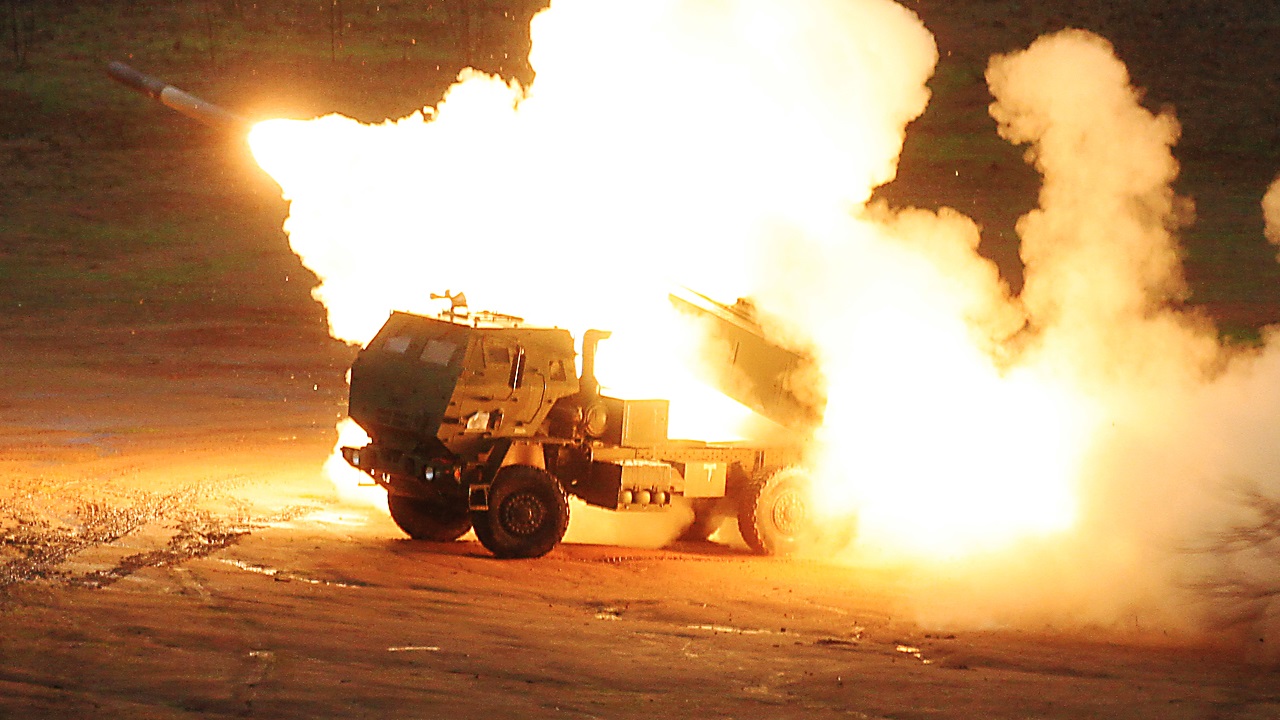Range of U.S. Supplied HIMARS Was Secretly Reduced – Even as the United States has continued to supply Ukraine with military hardware, the Pentagon has walked a thin line on what systems it would provide – fearing that weapons that could be used to strike Russian territory could cause the war to escalate.
The U.S. military had even secretly modified one of the platforms to ensure that it wouldn’t be able to fire into Russia.
The Wall Street Journal first reported this week that the twenty M142 High Mobility Artillery Rocket Systems (HIMARS) that began to be sent to Kyiv in June were uniquely modified so that they can’t fire “long-range missiles.”
Meet the HIMARS
The light multiple rocket launcher system (MRLS) was developed by defense giant Lockheed Martin and first introduced in 1993.
It is one of the most effective mobile rocket launch systems currently in service, and is able to provide 24-hour, all-weather, lethal, close- and long-range precision rocket and missile fire support. The entire system is operated by a crew of three, including a commander, driver, and gunner.
The crew can reload the weapon within four to five minutes, assisted by an integrated crane.
It has been used to strike Russian command centers and ammunition depots – and has been noted for its ability to move into firing position, launch its rockets and move out before Russian forces have an opportunity to return fire.
Along with the HIMARS, the Pentagon has also supplied Ukraine with the Guided Multiple Launch Rocket System (GMLRS) – a surface-to-surface system used to attack, neutralize, suppress and destroy targets using indirect precision fire – which has a range of 40 miles.
The HIMARS and GMLRS have been used in Ukraine’s recent offensives, which were launched in August.
Open Range
As part of an agreement with Kyiv, the United States has only been supplying rockets with a range of just over 40 miles.
The Ukrainian Armed Forces used the HIMARS multiple rocket launcher systems in the Zaporizhzhia region, where it was seen to be a force multiplier for Ukraine in its war with Russia.
The U.S. has resisted sending the Army Tactical Missile System (ATACMS) rockets, a surface-to-surface missile – as it has a range that exceeds 180 miles.
U.S. officials, who spoke to the Journal on the condition of anonymity, expressed concerns that Ukraine would use the rockets to strike targets within Russia.
Kyiv, which has requested the ATMS rockets for months, has vowed that the missile system would only be used to strike targets within Ukraine.
Maria Zakharova, the spokeswoman for Russia’s Ministry of Foreign Affairs, said in a September briefing the U.S. would “cross the red line and become a party to the conflict” if it sent longer-range missiles to Kyiv, The Hill reported.
Would Ukraine Be So Brazen?
Ukraine has begun to strike the Kremlin’s airbases within Russia with drones – two were hit in the early hours of Monday morning, while a third Russian airfield was reportedly ablaze on Tuesday. Officials in the Russian city of Kursk, located near the Ukrainian, released pictures of black smoke above an airfield in the early morning hours of Tuesday after the latest strike.
Kyiv has demonstrated an ability to penetrate hundreds of kilometers into Russian airspace with these attacks – and has signaled that it sees the bases located within Russia as legitimate targets.
A Senior Editor for 19FortyFive, Peter Suciu is a Michigan-based writer. He has contributed to more than four dozen magazines, newspapers, and websites with over 3,000 published pieces over a twenty-year career in journalism. He regularly writes about military hardware, firearms history, cybersecurity, and international affairs. Peter is also a Contributing Writer for Forbes and Clearance Jobs. You can follow him on Twitter: @PeterSuciu.

